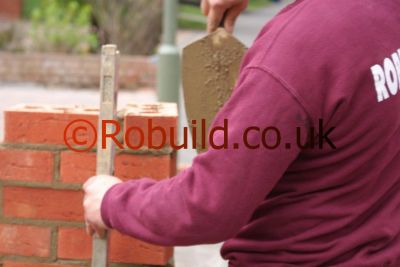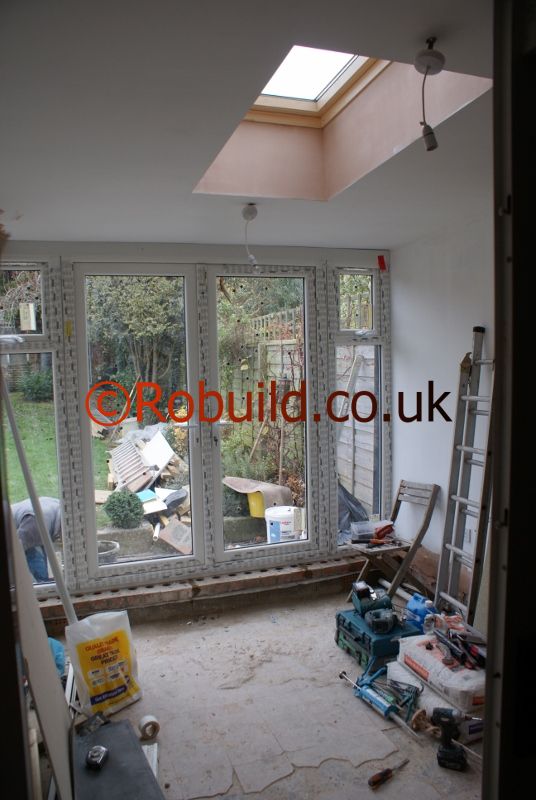Experts can lay bricks or blocks, quickly and well. Amateurs can usually do one or the other, but not both.

It you are content to work slowly, and if necessary to knock down a piece of wall and start again (if you do it before the mortar is dry you can brush off the bricks and all you have wasted is a few shovelsful of mortar), there’s no reason why a householder shouldn’t be his own bricklayer. Once you’ve begun to master the technique a whole range of jobs becomes possible, from making dwarf walls for the base of a greenhouse or garden shed to building a garage or a house extension. Start with a garden wall – if the results are a little irregular, you can always claim that the rustic look was intended.
Most tools needed can be hired or bought: brick trowel, pointing trowel, bricklayer’s spirit level (a yard long with two bubbles so it can be used horizontally and vertically), club hammer, bolster chisel, bricklayer’s line, a rule.

To cut a brick, chip a groove in it with hammer and bolster and tap unwanted side sharply. When a bricklayer does it the brick falls neatly in half; amateurs can use a lot of bricks before they master the knack (though a brick which hasn’t broken cleanly can still be used provided the face side is the right length). An easy way round this is to use a brick saw, a handsaw with hardened teeth set into the blade, and simply saw the bricks to size.
Wear working or gardening gloves; the mortar is hard on the hands. For a garden wall, mark out and dig a foundation twice the width of the wall; take out topsoil until you reach a firm base, the deeper the footing is, the better. Drive in pegs and level them, using a line or a straight-edged board and spirit level, so peg heads are about 7cm below ground level. Now fill trench with concrete (1 part cement, 6 of all-in ballast) to the top of the pegs and leave it to harden.

There are hundreds of different types of bricks, of different strengths, colours, finishes and prices; and the mortar in which they are set depends on the brick and the job it has to do.

Bonds are the patterns in which bricks are laid – English bond, stretcher , Flemish bond. Their purpose, apart from appearance, is to ensure that, for the sake of strength, no vertical joint comes directly above another. With foundations laid, stretch a line to mark where the face of the wall is to be, put a pile of bricks near each end.

If it is dry weather moisten them, the bricks should feel damp, dust-free mix mortar. Bricklaying is a hard job but also relaxing if you do it as hobby.












